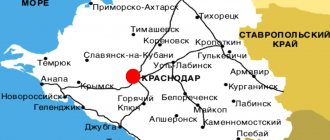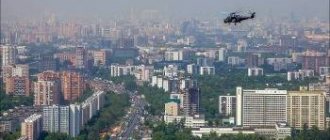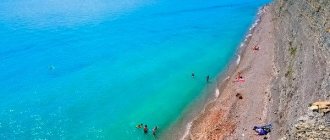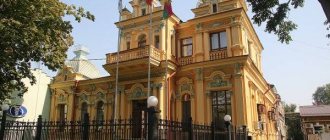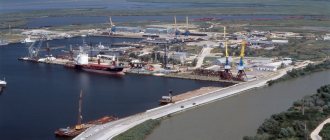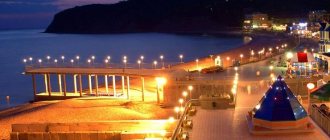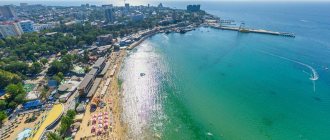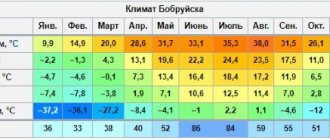Sights of Miass
The city of Miass is the regional center of the Chelyabinsk region. It is located at the foot of a whole group of ridges of the Southern Urals, they are called the Ilmen Mountains. The name of the city comes from the name of the Miass River.
In 1773, merchant Larion Luginin organized a settlement in this place in connection with the construction of a copper smelter.
Subsequently, gold deposits were developed in the valley of the Miass River. In 1824, even Emperor Alexander 1 came to the gold mines. This mine was called Tsarevo-Alexandrovsky.
Turgoyak
The Ural lake Turgoyak is called “the younger brother of Baikal” for its beauty and transparency.
The depth of the reservoir reaches 34 meters, and the water is considered healing due to its radon content. Turgoyak is a fairly cold lake with a rocky bottom, but residents of Miass and guests of the city enjoy visiting the beaches and swimming in it in the summer. The lake periodically hosts regattas - sailing competitions. One of the tournaments is for the prize of Fyodor Konyukhov - the famous traveler loves to visit Turgoyak.
Regatta on Turgoyak. Photo: provided by the ANO "Investment Development Agency of the Miass City District"
Not far from the western shore of Turgoyak is the island of Vera, a place where religious buildings and ancient workshops were discovered. There is a chamber tomb, a quarry from the 4th millennium BC, as well as the ruins of an Old Believer monastery from the 19th century. The name of the island is given by the name of a hermit girl who allegedly fled here and lived for a long time in an underground house. Vera Island is a cultural heritage site, and in order to preserve ancient structures, tourist access is limited.
Location: 11 km from Miass
Museum of the History of the Altai Spiritual Mission
If you already went to museums, then it would be useful to visit another one, dedicated to the Altai spiritual mission. It is located on the territory of the Bishop's Compound, and this in itself is already an attraction. More precisely, in the building that is the former residence of the head of the spiritual mission, on the third floor of which the single-altar church of St. Dmitry of Rostov was previously located.
It is interesting that Biysk was the center of a spiritual mission from 1830 to 1917. And one of the first translations of the Bible from ancient languages into Russian was carried out there. The museum stores the most valuable exhibits, rare Orthodox icons, early printed and handwritten books, calendars, crosses and samples of copper casting.
Location: Irkutskaya street - 1/20.
Holy Trinity Church
Kostroma attractions photos and descriptions, where to go
To this day, we have managed to preserve the Holy Trinity Church, which was previously included in 24 churches in the Miass district. The foundation stone for the religious landmark took place in 1887, and its consecration took place in 1889.
The Holy Trinity Church is a cemetery church, built thanks to the local merchants. Despite the small size of the object, one can note the beauty of the external and internal decoration, created on the basis of marble, amber, carved oak, and English iron.
In 1936, the church was converted into a workers' dormitory. After 8 years, the object was returned to believers. Since 1994, a Sunday school has been operating at the church.
Location: Kolesova street - 21.
Church of the Epiphany
The Church of the Epiphany is located in the central part of Miass. This temple is considered one of the most important in the entire city. The religious site has four chapters and a bell tower.
Construction activities started in 1994. However, construction was temporarily suspended due to lack of funds. In 2007, financial problems were resolved. As a result, in 2012 it was possible to complete construction, carry out interior decoration, and hold a consecration ceremony.
Location: Kolesova street - 21.
Battle losses and prisoners
Sights of Omsk: where to go
In addition, several machine guns were lost, or, more simply put, abandoned during the flight. The report of the Provisional Military Committee of the Miass Plant dated June 1 reported:
“...The Bolshevik offensive on Miass was successfully repulsed. The Czechs and the formed squad bravely walked with clear hope of success. The Red Army soldiers fled in disarray and to this day are hiding in the forests and mountains, making their way to Zlatoust. During the battle, 9 machine guns, many rifles and ammunition were captured. On the battlefield, abandoned weapons, overcoats, boots are lying everywhere, in addition to this, a lot of butter, sugar and in general a lot of other things that were apparently looted in Syrostan were found. Among military rifle cartridges there are many explosive ones, with the ends cut off, so when wounded, large lacerations were obtained, from which most died. Our losses: 14 killed, 7 seriously wounded and 5 lightly wounded...”
As a result of such a hasty retreat of the Reds, the Miass detachment of Yakubaitis was surrounded by Czechs and volunteers in the area of \u200b\u200bMokhovaya Mountain and pressed against a swamp near the Black River. Yakubaitis was killed in battle, and the remnants of the detachment under the command of I. Silkin left the encirclement through the swamp under the cover of machine gunner F. Gorelov. Gorelov was captured and executed.
At the Turgoyak junction, Podvoisky and other members of the VVI personally distributed defense areas for each detachment, indicating firing positions for machine guns. The armored train stood in a recess at the siding, and VVI member Stogov installed field guns under the rocky cover of the quarry. But the Whites did not attack Turgoyak and returned to the right bank of the Miass River.
Miass temples, churches and cathedrals
Representatives of different faiths have coexisted peacefully in Miass for more than two centuries. Each religious community has its own temple.
Church of the Holy Trinity
Address: ave. October, 3.
The brightest and most colorful temple in the city was erected in 1887 near the cemetery. The variety of colors pleases the eye: red and white walls, green roofs, blue domes, gilded crosses.
Previously, there was a wooden chapel on this site. Local merchants donated money for the construction of a new Orthodox church, and Nizhny Novgorod peasant Pyotr Saraev supervised the work. The gold miners did not skimp on decorating the temple; the interior is rich and original; workers used wood, marble, gilding and even amber for decoration.
After the events of 1917, the church was closed, and in 1936 it was turned into a hostel for miners. In 1944, the building was returned to Orthodox Christians; for a long time it remained the only functioning church in the city.
Church of the Epiphany
Address: st. Kolesova, 21.
In the very center of the city, on the banks of the river, stands the white-walled Orthodox Church of the Epiphany. The idea to build a temple appeared in the early 90s, but work progressed very slowly due to lack of money: the foundation of the building was laid in 1994, but the finished temple was consecrated only in 2012. The labors of the workers and parishioners were not in vain: the new church became the main decoration of the residential area.
The interior decoration is laconic and modest, the temple is spacious and roomy. In front of the central altar there is a magnificent four-tiered iconostasis. The church contains particles of the relics of the righteous Simeon of Verkhoturye, a revered Ural saint, as well as the monks Job and Amphilochius of Pochaev.
Church of the Annunciation of the Blessed Virgin Mary
Address: Dynamo microdistrict.
A small red-brick temple, topped with a massive dome, stands on a vacant lot away from residential buildings; a rectangular bell tower adjoins the building. The construction of the Annunciation Church was also not easy and dragged on for 10 years. Construction began in 2007, but consecration took place only in 2022. Money for the temple was collected by the whole world, and entrepreneur N.S. helped the parishioners in many ways. Krivosheev.
Intercession Church
Address: st. Malysheva, 38.
The Church of the Intercession of the Blessed Virgin Mary is the only Old Believer church in the city. Miass has long been one of the centers of the Old Believers in the Russian Empire; many adherents of the “old faith” worked at the city’s first copper smelter. In 1819, the Old Believers built a chapel in Miass, and in 1895 - a stone church. Unfortunately, none of the buildings survived: the Bolsheviks took the buildings and later destroyed them.
After the collapse of the USSR, the Miass Old Believers decided to build a new brick temple. Construction began in 1995, and four years later the finished building opened its doors to believers. Today, services are regularly held in the church, parishioners and the clergy are restoring the ancient Old Believer cemetery.
Mosque in the village. Selyankino
Address: Ilmenskaya st., 22A, Selyankino village.
Not far from Miass, in the village of Selyankino, there is the only Muslim mosque in the area. The temple was built on the initiative of the Nasyrov brothers. The beautiful spacious building on the top of the hill was erected with donations from the Muslim community.
As in the cases of other religious buildings in Miass, the construction of the Cathedral Mosque did not go smoothly: the work was delayed due to lack of funds. The foundation was laid in 2008, but the opening of the temple took place only in September 2022. The mosque was named “Gailya”, which translated into Russian means “Family”.
Natural Science Museum of the Ilmen State Reserve
Sights of Izhevsk: where to go
The Ilmensky Nature Reserve is located in the eastern part of the Southern Urals and covers an area of 32,100 kilometers. The reserve complex contributes to the successful conservation of rocks, minerals, fauna and flora that are typical of the Southern Urals.
The natural science museum began its work back in 1936. In Europe, news of Ilmen came more than two hundred years ago, after which active study of the area began.
The museum is included in the TOP 5 of the largest and most interesting geological and mineralogical museums in Russia. Here you can see minerals, crystals, rocks. Moreover, 279 types of minerals were found in the Ilmen Mountains.
Visitors have even more opportunities to appreciate the natural exhibition. This is facilitated by the picturesque design of the museum visit.
Every visitor can 100% enjoy an amazing pastime.
How to get around Miass
You can get around Miass by bus, trolleybus or minibus. There are 4 trolleybus routes and almost 30 gazelle and bus routes running around the city. Regular city transport starts at 6 am. The last bus leaves the route at 23:00, the last gazelle at 21:00.
You can call a taxi 24 hours a day or catch a private cab driver on the street. Approximate cost from 100 rubles. for landing plus 15 rubles. per km of road.
The sights of Miass are undoubtedly worth visiting this city and experiencing the atmosphere of gold mining, the study of minerals and the production of unique Ural cars.
Article design: Mila Friedan
Zharov's House
Zharov's house ideally complements the historical part of Miass, in which one can find halos of the factory, gold mining, and merchant way of life. The city surprises with its strict rectangular layout.
Miass is an ancient city that is ready to surprise with its architecture and confirm the value of history and existing traditions.
Miass is not rich in historical and architectural monuments. There are no centuries-old churches and elaborate Stalinist houses, merchant mansions, there is neither a fortress wall nor a Kremlin here. The pride of Miass residents is, first of all, the nature surrounding the city: the Ural forests, numerous lakes and mountains. But the most famous natural attraction is the crystal clear Lake Turgoyak, which will be the subject of a separate article. Today we will walk through the city center, which is popularly called “Avtozavod”, and tell you about its attractions.
Our journey, like real hikers, will begin from the bus station. Such a natural-urban landscape opens up if you turn your head to the opposite direction.
It’s best to start getting acquainted with the city center from Avtozavodtsev Avenue, where almost all public transport in Miass goes from the bus station.
Municipal transport in Miass is almost completely ruined and the main carrier here, as in many other cities of Russia, is a fixed-route taxi. Unfortunately, private owners use the cheapest and most uncomfortable GAZelle models.
Municipal transport is represented by trolleybuses (5 routes, the 2 longest ones were closed) and buses (47 routes have been closed over the history of their existence). Most of the trolleybus fleet are morally and physically obsolete vehicles that are subject to write-off, and, according to residents, they operate irregularly. Therefore, Miass residents usually prefer minibuses to trolleybuses and buses.
The main attraction of the center of Miass is the shopping and entertainment center. The design of the building cannot be called successful, but it does its job - the bizarre appearance of the complex with ears in the form of verandas and a trunk reminiscent of a ski jump is well remembered.
By the standards of the regional center, it has a huge area. Here you can find fashionable clothing brands, sports stores, household goods stores, shoe stores, cosmetics stores, a Spar grocery hypermarket and a cinema. On a weekday visit, the shopping center was almost completely empty.
Opposite the “Elephant” is Torgovy.
An undoubted advantage here is the presence of a children's playground and a square with benches for residents to relax. The park lives up to its name.
To appreciate the entire center of Miass, let’s walk further down the street to the Automobile Plant.
The modern building of Sberbank on Avtozavodtsev Avenue.
Monument to fellow countrymen who died during the Great Patriotic War.
Fragments of Soviet cultural heritage.
Nice Soviet details.
Of particular interest is the Stalinist development in the last blocks in front of the automobile plant.
Similar three-story brick houses - Stalin buildings are typical for small towns in Russia.
Here is the main dominant feature of the city - the Palace of Motorists with Stalinist turrets on both sides.
Very reminiscent of centers in other cities with a population of 100-200 thousand people. For example, the square in front of the Drama Theater in Prokopyevsk.
Houses with a spire, characteristic of Soviet buildings.
Miass
Magadan
If you don’t want to spoil the impression of the city, it’s better not to look into the courtyards even on the main street.
The journey through the center of Miass ends near URALAZ.
The Ural Automobile Plant is a leading manufacturer of trucks.
The plant produces up to 3,000 vehicles per year: flatbed trucks, crew buses, truck tractors. Together with IVECO, the production of dump trucks, truck tractors, timber trucks, log carriers and chassis has been launched.
In memory of the first car produced by URALAZ on July 8, 1944, a monument to the ZIS-5B car was erected.
Walk of honor for the best car manufacturers.
This is where our acquaintance with the center of the Ural city comes to an end. On our next trips we will walk along the banks of the Miass River and Lake Turgoyak, and also visit the park of stationery figures.
Where is the city
Miass is located in the Chelyabinsk region, 96 km from the administrative center, on the banks of the river of the same name. The city was founded in 1773, covers an area of 112 km² and is located at the very foot of the Ilmen Mountains. In total, about 150 thousand people live in the city. The city ranks 4th in terms of population among other cities in the region.
Geographic coordinates of the city are 55°02′42″ N. latitude. and 60°06′29″ E, it is located at an altitude of 341 m above sea level. The city is located in the very middle between the equator and the north pole. Its location provides an ideal combination of the amount of solar heat required and the length of daylight hours.
The best way to get to Miass is by train. The railway station is located at Miass, st. Academician Pavlova 42 "a". The railway station is open daily, 24 hours a day. Today, the Miass - I railway station belongs to class II and is part of the Zlatoust branch of the South Ural railway.
The railway connection to the city was launched in 1894. The modern station building was opened in 1981. About 500 thousand people use the station’s services every year.
Near the railway station, at Miass, st. Akademika Pavlova 48 is the bus station. The bus station ticket office is open from 6 a.m. to 8 p.m. There are more than 500 intercity trips daily.
Miass, whose sights may be of interest to tourists, is located 124 km from the nearest airport (the distance of the optimal car route). The distance on the map in a straight line from Miass to the airport is 93 km.
Travel time by car is approximately 2 hours. This is a class B federal airport called Chelyabinsk. It is located 18 km from the center of the city of the same name, 2 km from the village of Balandino. Miass can be reached from central Russia by car along the M5 highway.
Dumpling Museum
- Master classes “Homemade dumplings: we make them ourselves, we eat them ourselves”
- Coming to Miass and not visiting the first and only Museum of Dumplings is equivalent to coming to Moscow and not visiting Red Square
- The Museum of Dumplings is a whole historical complex located in the house of the merchant Smirnov
The most interesting and delicious museum in the city, which is liked by both adults and children. Here you can learn the history of the traditional Siberian delicacy, take part in master classes on making dumplings and, of course, tastings. The exhibition tells about 40 different types of dishes, which we are accustomed to consider as originally Russian. Guests are presented with models of dumplings from different countries, each of which has its own shape and manufacturing secrets.
Aerodynamic complex "Skywind"
The “Skywind” aerodynamic complex is a unique, the only professional wind tunnel in the Urals, designed to simulate free fall in an air flow. The wind tunnel is suitable both for improving the skills of skydivers of various levels of training, and for those eager to experience the unique feeling of free fall for the first time.
Address: Turgoyak highway, 8/5 "B"
Phone: 8-922-73-8888-3
Distance from GLC Ryder: 8 km
Find out details
Interesting places to relax with children
There are several places in Miass where you can have fun spending time with your child.
City Park
The most desirable place of entertainment for children is the city park.
It is located in the center of Turgoya highway.
In addition to entertainment attractions, the park includes:
- playgrounds;
- summer cafes;
- tables for playing table tennis;
- grounds for playing football, volleyball and badminton;
- there is a shooting range for crossbow shooting;
- corral for horse riding.
Cinema "Hawaii" in the Prometheus Palace of Culture
The cinema, which supports 2D and 3D formats, is located on the territory of the Prometheus House of Culture at 14 Makeev Avenue. This is one of the most modern multiplex cinemas in the Chelyabinsk region. The cinema is equipped with air conditioning and a 6-channel sound system. The approximate cost of tickets is from 140 to 260 rubles.
Miass city pond
In the summer and in good weather, you can have an interesting time on the shore of the local city pond enjoying the picturesque bays and coves. This is an artificial reservoir located in the very center of the city. It was created in 1776 to provide water for a copper smelter.
Miass city pond
Today it is a favorite vacation spot for city residents.
Sights: photos and descriptions
Park of giant figures "Bureaucrat"
What you can see and where to go in the city of Krasnodar
Address: Oktyabrya Ave., 7.
It all started with a giant paper clip installed in the park in 2009. Very quickly the idea turned into a whole complex of giant office. Today you can see here a two-meter button, four-meter scissors, a nine-meter paperclip and other objects familiar to every office worker.
The task was not only to create a unique park for photos and walks, but also to set a record in the Guinness Book. At 9 m and 28 cm high, the paperclip is officially recognized as the largest in the world.
Museum of Local Lore
The museum has permanent exhibitions: about the settlement of the Urals by the Bashkirs, about the history of the development of gold mining in these parts and the founding of a copper smelter, as well as exhibition complexes showing visitors the lifestyle of mining masters of the 19th century and the office of a mining engineer.
Visitors note that the museum has something to see for both adults and children. You can book a tour separately. The cost will depend on the number of people, but on average it starts from 150 rubles.
Museum of the Ilmen State Reserve
- Address: Ilmensky State Reserve.
- Telephone.
- Opening hours: every day, except Mon. and Tue. from 10 to 17.
- Ticket price: adult - 100 rubles.
Those who want to see all the variety of stones should definitely visit this museum. After all, it is one of the five largest geological and mineralogical museums in Russia and has an impressive collection.
On the second floor there is an exhibition presenting the animal diversity of the Ilmensky Nature Reserve. You can buy themed souvenirs in the museum shop.
House of merchant Smirnov
The complex of merchant buildings from the late 19th century offers a lot of entertainment. Here you can visit the only dumpling museum in Russia, which will tell you about the history and recipes of its preparation. You can sign up in advance for a master class on making dumplings. You can taste the products in the cafe located there.
Children can spend time at the Buratino theater or at the Lukomorye club. On weekends, family events are held there, which you can find out about in advance on the complex’s website or by phone.
A regular trade fair offers homemade pickles, birch bark products, handmade dolls and other interesting crafts.
Church of the Epiphany
The Church of the Epiphany is young - it was built only in 1994 with funds from the automobile plant. Today in the temple there are many rare icons and the relics of St. Simeon of Verkhoturye, St. Job and Amphilochius of Pochaev are available.
The temple makes a majestic impression, and the surrounding area is pleasant for walking.
City Park
The city park, which locals call Victory Park, is practically the only such place in Miass. It is located in the center near the Turgoy highway. There is a monument to Lenin here, well-groomed alleys and flower beds.
The park is very cozy and spacious. Locals and visitors love to take leisurely walks here.
Entertainment available: table tennis, football, volleyball, badminton, crossbow shooting, horse riding. There are children's playgrounds and outdoor cafes on the territory. In winter there is a trail for skiers.
Monument to the first Ural car
On July 8, 1944, the first ZiS-5V vehicle rolled off the factory assembly line. 40 years later, a monument dedicated to the first Ural car was unveiled. Around the monument there are stands with photographs of produced cars.
The history of the automotive industry in Miass started in 1941, when it was decided to create a foundry and automobile engine production. Subsequently, the projects began to be successfully implemented. In 1944, the first vehicle, called the ZiS-5V, was produced.
Park of stationery figures "Bureaucrat"
One of the most worthy objects in Miass is the “Bureaucrat” park, dedicated to office supplies. The sculptures are surprising in their large sizes, as a result of which they create an amazing ensemble.
An entire park is dedicated to paper clips, compasses, scissors, buttons, and measuring rulers. This fact contributed to the inclusion of Miass in the Guinness Book of Records.
General information and history
Miass is located in the west of the Chelyabinsk region, near the Ilmen Mountains, on the Miass River, almost a hundred kilometers from the regional capital. In this subject of the Russian Federation it is the fourth largest. The foundation of the city dates back to 1773. Is a historical city. the fourth largest city in the Chelyabinsk region of Russia (since 1926). Founded in 1773. It is one of the historical cities of Russia. Not far from the city is the Ilmen Mineralogical Reserve. The total area of the city is 111.9 km².
The first settlement appeared in 1773 due to the decision of the merchant I. Luginin to found a copper smelter. But due to Pugachev’s uprising, its construction was temporarily interrupted. As a result, it began to function four years later. In the first ten years after this, the plant developed successfully. Then the merchant died, and one of his heirs sold the plant to the state. By the middle of the next century, copper production decreased. The plant ceased to generate income and was closed.
The niche of copper smelting was occupied by gold mining. This metal was mined in huge quantities throughout the Miass River valley. This activity served as the main city-forming production until the 20th century. When nationalization took place after the revolution, large associations could not stand it and individual miners took their place.
In 1903, the first train from the capital of the empire to Vladivostok traveled along the Trans-Siberian Railway through Miass. 11 years earlier, a freight train from Chelyabinsk arrived in Miass. In 1915, the sawtooth factory was evacuated to the city from Riga. The following year, a sawmill was launched (now the Miass Tool Plant), which subsequently became one of the best in the relevant field not only in the Russian Empire, but also in the world.
In 1926, Miass became a city in order for its plant to develop economically. Mining shafts opened in 1933, and the timber industry developed in the first half of the 20th century.
In 1944, the first car in the Urals, the ZIS-5, was produced in the city. The first batch of this model went to the front, where they were converted into Katyushas. After the war, automobile production continued to develop intensively. During Khrushchev's time, the automobile plant was renamed the Ural Automobile Plant. Two years earlier, production was also evacuated from Moscow to Miass.
In 1955, a city district called Mashgorodok was planned, in which a design bureau, previously located in Zlatoust, and an experimental rocket science base were to be located. Since these objects made this area especially secret, when mentioning Mashgorodok, they never called it the Miass area. Professionals from all over the USSR came to the area to work. Gradually, a rich infrastructure appeared in it. He also greatly expanded Miass and brought a lot of beautiful things to its appearance.
Religious buildings of Miass
Miass is not a resort town, but there are a huge number of historical attractions on its territory.
Church of the Epiphany in Miass
The white stone church with 5 domes is located at Miass st. Kolesova 21. It is located 990 m from the city center. You can get to the church by public transport to the stop “Karpova Boulevard”, “Fersman Street” or “Vocational Lyceum No. 38”. The church is open to visitors from 7 a.m. to 7:30 p.m.
Holy Trinity Church
The red brick Orthodox Church is located in the city of Miass in the Southern Territorial District. The church was erected in 1887 on the site of an old wooden chapel on the territory of the cemetery.
You can get to the church by public transport to the “Gorbolnitsa” or “PATP” stops. The church is open to visitors from 8 a.m. to 5 p.m.
Temple of the Icon of the Mother of God
The temple is located at Miass, st. Makeeva 36 "b". The temple is an ensemble of 2 red brick buildings with a blue roof and golden domes. You can get to the temple by any public transport to the “Sportivnaya” or “Northern Market” stops. The temple is open to visitors from 9 a.m. to 7 p.m.
Museums of Miass
There are many museums in the city where you can learn the history of the Ural region and local main attractions.
MBU City Museum of Local Lore of the Miass City District
The museum is located at Miass, st. Pushkin House 8. This is the oldest museum in the Chelyabinsk region, founded on November 24, 1920. The museum displays exhibitions dedicated to gold mining in the Miass Valley.
The museum tells about the history and culture of the region. The exhibits include ancient books and documents dating back to the beginning of the last century. The museum is open to the public from 10 a.m. to 5 p.m. Ticket prices range from 100 to 120 rubles.
Natural Science Museum of the Ilmen State Reserve
The museum is located at the address Miass, the territory of the Ilmensky Nature Reserve. Samples of stones and minerals mined on the territory of the reserve are exhibited here. The museum-reserve is open to visitors from 10 a.m. to 5 p.m. Ticket prices range from 50 to 100 rubles.
Museum of the History of Ural Automobile Manufacturers
The museum is located at Miass, st. Avtozavodtsev house 1, next to the city Victory Park. There is a car park 100 m from the museum. The museum is open Mon-Fri. from 8 to 12 o'clock. Various models of cars of various modifications are exhibited as exhibits in the museum.
Restaurant "MON PARIS"
Restaurant "MON PARIS" is a small family restaurant where you can have lunch or spend a wonderful evening. And if you don’t want to go anywhere, then you can download a convenient application and choose your favorite dish from the proposed menu.
Address: st. Vysotskogo, 2
Phone: 8-902-605-13-14
Distance from GLC Ryder: 3 km
Ski resort Sun Valley
The ski resort is located at the foot of the majestic Mount Known near Miass. The mountain is included in the Ural mountain range.
Sunny Valley has been successfully operating since 2001. Every tourist has the opportunity to enjoy their holiday from November to April, since it is at this time of year that all tourists can appreciate the protection from the wind.
In summer, tourists are also offered extreme entertainment:
- Rope park.
- Skate park.
- Excursions to Mt.
However, in winter there are even more opportunities for extreme sports:
- Skiing.
- Half lip.
- Alpine sleigh.
- Slopestyle.
Sun Valley is a place where brave people should visit.
Location: Romanenko street - 50A.
Simonov Estate
The estate of gold miner E. M. Simonov is an object of cultural heritage of Miass. Previously, the Chashikhina estate was located here, which Simonov acquired in 1879. From the previous complex, only a 2-story residential building was left, since other buildings were built taking into account the same stylistic principles.
Simonov's house is located on a cliff. The building surprises with its richly decorated facade, and it was built in an unusual “brick style”. To date, only the main staircase has survived from the rich interior.
Currently, the Simonov estate houses an exhibition dedicated to Miass.
Location: Pushkin street - 8.
Meeting with intelligence
Gilin's right column, in addition to the units specified in the order, was reinforced by the newly arrived Nyazepetrovsky, Nikolsky and Kusinsky detachments. Immediately after the start of the movement, it became clear that the Red Guards did not know how to march at night or maintain communication and interaction between units. But, despite all the costs, the column safely reached the Zlatoust-Miass highway, where it met a scout patrol returning from the direction of Miass. Intelligence reported that on the western side of Mokhovaya Mountain, near the gunpowder warehouses, white units were stationed.
Gilin decided to change the route and bypass Mokhovaya Mountain, about which he sent a report to the Field Headquarters, where it was received at 2:40 on June 2. Fearing the actions of the Whites from Mokhovaya Mountain to the rear of the attackers, Podvoisky ordered Malyshev and VVI member Nikolaev to withdraw from the defensive line along the Miass River, part of the forces and capture Mokhovaya Mountain before dawn, and then advance together with Gilin on Miass.
Nikolaev's mounted reconnaissance went ahead, but did not find any whites on the approaches to the mountain. However, when the infantry was brought up, a completely natural misunderstanding occurred. On the crest of a height, against the background of a bright sky, a horseman was seen from the advancing chain. They called him, but he did not respond, they called him again - the result was the same.
In violation of all rules, the rider was fired upon. It turned out to be his own intelligence officer. They didn’t hit him, but the whites were alarmed and, occupying the trenches, opened fire. In the chain of Reds, as Yambulatov, a participant in that battle, put it,
Ilmen Lake
Ilmen Lake is located in the Southern Urals near the southern edge of the Ilmen ridge in the small town of Miass in the Chelyabinsk region near the railway station at an altitude of 331 meters above sea level.
Along the northern shore of the lake runs the Miass-Chebarkul highway and the Chelyabinsk-Ufa railway. In addition, on the northern coast there are houses that belong to the city of Miass. The West Bank is a recreational area. There is a recreation center and a children's camp here. The Ilmen annual art song festival is also held here.
The eastern bank is not used for economic activities, because the territory of the Ilmensky Nature Reserve is located there. On the southern shore there is a wetland.
A dam is installed on the lake, the flow from it flows into the Miass River.
Coordinates: 55.00750000,60.14722200
Districts and real estate of Miass
Miass is a very elongated city. Officially, it is divided into five administrative districts: Northern, Southern, Eastern, Western and Central. Naturally, no one calls them that in everyday life. If you ask about the division of the city on its streets, they will tell you, first of all, three main parts: the Old Town, the Automobile Plant and Mashgorodok.
Mashgorodok
The most educated and intelligent part is considered to be Mashgorodok (founded in 1959 for the technical intelligentsia of the Miass Machine-Building Plant and the Makeev State Rocket Center). However, residents of other parts of the city consider her snobbish and arrogant.
One of the pleasant features of Mashgorodok is the complete absence of poplars, so familiar to any city. Linden trees, rowan trees, birch trees, lilacs - and no poplar fluff in the summer. In addition, it’s only a 15-20 minute walk from Mashgorodok to Lake Turgoyak.
Mashgorodok
Old city
The Old Town is the historical part of the city, a completely unprestigious place to live. This is mainly the private sector. The houses here have their own characteristics: a stone ground floor and a wooden upper floor. Many of them are protected as historical monuments, for example, the house of gold miner Simonov, built in an eclectic style in the second half of the 19th century.
Old city. Simonov's mansion
Automobile plant
The automobile plant is the real center of the city. The city administration, tax office, prosecutor's office, pension fund, etc. are located in this area. The only shopping and entertainment center is located here. It really looks like an elephant because of the porch with a canopy that resembles an elephant's trunk.
TRC Elephant
Each of the three main parts of the city has its own Orthodox church. There is no mosque, despite the fact that the Muslim population is represented in sufficient numbers.
It is necessary to note several more areas of the city that are not included in the main parts. The village of Stroiteley is located between Avtozavod and Mashgorodok. It was built in the 50s by mobilized sailors, so the names of the streets poetically recall the expanses of water: Amurskaya, Sevastopolskaya, Kerchenskaya, Nakhimovskaya. The Miass branch of the Chelyabinsk Classical University is located in the village of Stroiteley.
The villages of Vostochny and Melentyevka are entirely private sector. The village of Dynamo was successfully built on a hillock, fifteen minutes from the central part of the city and at the same time completely separate. Polikarpovsky Pond was once a clean drinking pond, with water lilies and lilies. But today only extreme sports enthusiasts can risk swimming in it.
Cottage villages located in urban areas deserve special attention. Firstly, Turgoyak. Initially, the village existed as an ordinary village, but gradually turned into a real kingdom of houses with turrets and elaborate facades, expensive mansions, palaces, etc. Many of them function as mini-hotels. The most expensive real estate is here, despite the fact that between the new palaces there are still unsightly houses with crumbling fences. Their residents do not want to sell their huts even for big money.
One of the houses in the village of Turgoyak
Secondly, Forest Village. It is located not far from Mashgorodok, turn left before reaching it two or three hundred meters. The cost of elite cottages there reaches 17 - 20 million rubles.
The areas of townhouses in Komarovo (Avtozavod) and at the end of Mashgorodok are also considered an elite residential area. The cost of a townhouse with a plot of 6 acres, all communications are central, with a landscaped, fenced territory of the complex, in rough finishing - from 6.5 million rubles.
In the background is Komarovo
Buying an apartment in Mashgorodok today is much more expensive than at the Avtozavod or in another part of the city.
What to see and where to go in Miass and the surrounding area
Less than two and a half centuries ago, in 1773, on the site where the city of Miass is now located, a settlement was founded for workers of the newly built copper smelter.
Copper reserves quickly exhausted themselves, and soon the plant, which ceased to generate income, was closed. But in the first half of the 19th century, gold deposits were discovered. And the small village was destined to actively develop, thanks to the precious metal. By the middle of the 19th century, a gold mining partnership had already been founded, and the technical achievements of that time began to be introduced into production. Which led to the active development of this fishery, and the village itself.
150 years after its founding, in 1926, it was given the official title of a city.
Modern Miass is a small Ural town in the Chelyabinsk region, included in the “List of Historical Cities of Russia” since 1982.
For ease of route planning, we have marked all the mentioned attractions on the city map:
What is the Ilmensky Nature Reserve famous for?
Rivers and lakes
Having found out where this protected zone is located, you can examine in detail the rivers and lakes located in this territory. We will try to answer below what plants and animals live in the reserve, what precious minerals and other questions.
Bolshaya Cheryomushka river.
Looking at the map, you can see that the territory is rich in reservoirs. The longest river in the area under consideration is Bolshaya Cheryomushka, the length of its channel is almost 10 km. It has a narrow channel through which the purest mountain water flows, flowing into Lake Ilmenskoe.
The Belaya, Teply Klyuch, Ilmenka, Nyashevka, etc. rivers also flow within the reserve. In addition to rivers, the reserve is famous for lakes, which can be easily found on a detailed physical map of the Southern Urals. There are only 30 lakes, including both large and small. Let's name some of them.
Lake Big Kisegach.
The remaining reservoirs are several times smaller than Lake Big Kisegach, with the exception of Lake Big Miasso with a diameter of 9 kilometers and an area of 11 square kilometers. Also within the forest park are lakes Ishkul, Maly Terenkul, Karmmakul, Baraus, Maly Kisegach.
Animal and plant life
The territory of the reserve is characterized by the habitat of different species of animals. Here you can find squirrels, hares, badgers, chipmunks, wolves, minks, stoats, foxes, wild boars, deer, and roe deer. Previously, animals were hunted in these places for profit. However, with the advent of the reserve, the population of game animals was restored.
In the 19th century, local authorities decided to develop the American mink population on the territory of the current reserve. As a result, the European mink was completely eliminated and joined the list of extinct animals in the Ilmensky Nature Reserve.
Today, rangers carefully monitor, which helps effectively combat poaching. Also, to prevent moose from eating tree bark, salt is added to their habitats.
The differences between mountain and plain areas create ideal habitat conditions for the birds of this South Ural reserve. The space of rivers and swamps was filled with swans, geese, seagulls, and cranes. And the forests are inhabited by wood grouse, gulls, and waders. Golden eagles, ospreys, and snipes regularly circle in the sky.
The territory of the forest park is densely occupied by vegetation. Pine and birch forests are common here. In the south there are swampy thickets, in the east there are steppes and copses, and in the west there are dark coniferous forests.
Creeping goodyear, green moss, green moss pine, blueberries and lingonberries spread across the earth's surface of the lowlands. In the mixed forest zone, a rare species of lady's slipper grows. In the southeast and south, expanses not occupied by forests grow blueberries, cloudberries, cranberries, sundews and other meadow vegetation.
The territory of the forest park is densely occupied by vegetation.
Minerals
From geography lessons we know that the Urals have a large amount of minerals, which means the Ilmensky Nature Reserve is no exception. Below we look at the most famous gems characteristic of this territory:
- Sapphire is a medium blue colored precious mineral that is a type of corundum.
- Topaz – Transparent topaz with spots is found. There are also stones ranging from yellowish-golden to brown.
- Hyacinth – This mineral is often called the blood stone due to its bright purple color.
- Amazonite is a variety of potassium silicate with a light chrome tint.
- Corundum is a mineral formed during the solidification of magma, which has several shades. Padparadscha - pale orange, blue - sapphire, red - ruby, ordinary - colorless, opaque.
In general, there are so many minerals in the protected zone that listing them would take a lot of time. These are garnet, aquamarine, phyrsite and miaskite. For a complete list of precious stones and minerals, you can look for yourself in special literature on geology.
Sapphire is a medium blue precious mineral.
Lake Inyshko
To the northeast of Turgoyak, another body of water formed, much smaller in size - Lake Inyshko. It is separated from Turgoyak by a small strip of land less than 200 meters wide. The lake is located approximately 20 meters above the level of Turgoyak.
The inyshko has an oblong shape. It extends from northwest to southeast for 1180 meters. Width up to 400 meters. The name comes either from the male name Inysh, or from Bashkir words meaning “small” or “located nearby.” There are fish in the lake: crucian carp, roach, perch, pike, rotan.
According to legend, one of Pugachev’s treasures is hidden here. Allegedly, during the Peasant War, local merchants decided to pay off Emelyan Pugachev and sent him 2 barrels of gold. However, Pugachev did not accept the offering and ordered the treasures to be thrown into the lake. The spread of rumors about the treasure is also facilitated by the presence of a double bottom at Inyshka: the lower one is made of silt and sand and the upper one is made of peat. According to the legend above, barrels of gold, due to their heaviness, pierced the top layer of the bottom and were reliably hidden somewhere under the peat.
On the mountain behind the lake there is a good observation deck, which offers a picturesque view of both bodies of water.
Children's Art House “Youth” (formerly “Island”)
- Municipal autonomous educational institution of additional education for children "House of Children's Creativity "Youth" named after Academician V. P. Makeev
- There are many children's clubs at the center
- Concerts are often held on the stage of the center
Since Soviet times, the Children's Art Center has opened its doors to children of all ages. Today, here you can practice not only dancing, drawing or sculpting, but also modern types of art: digital photography, 3D design, aircraft modeling, etc. Master classes, performances and sports competitions are constantly organized on the basis of DDT. Guests of the city who come to Miass with children can also take part in them.

